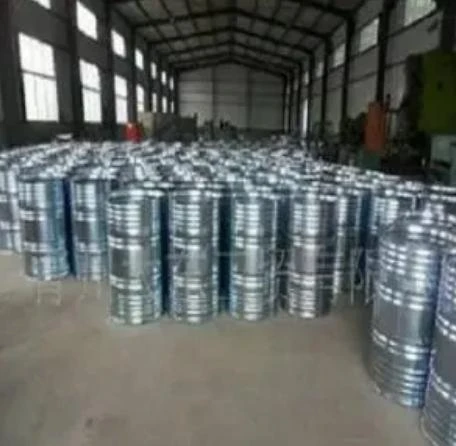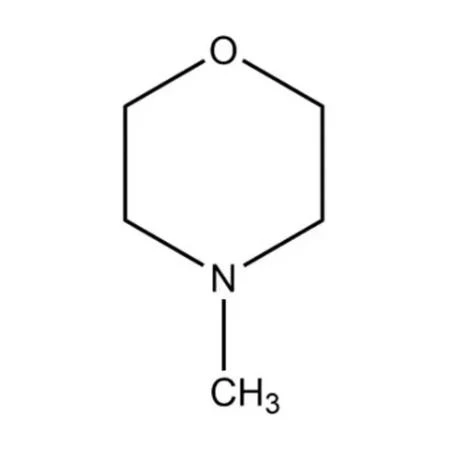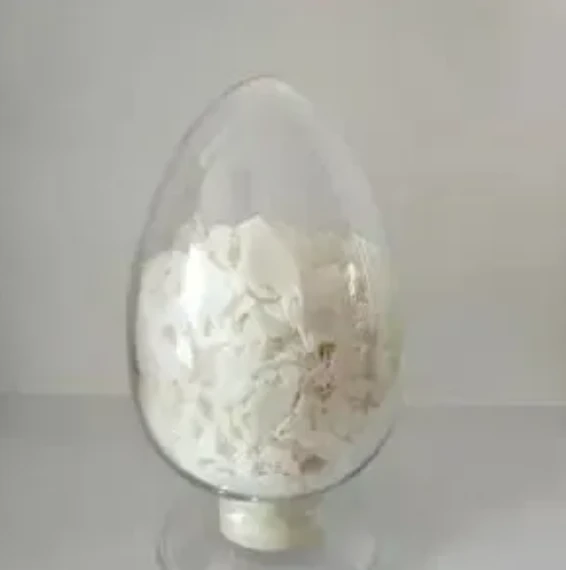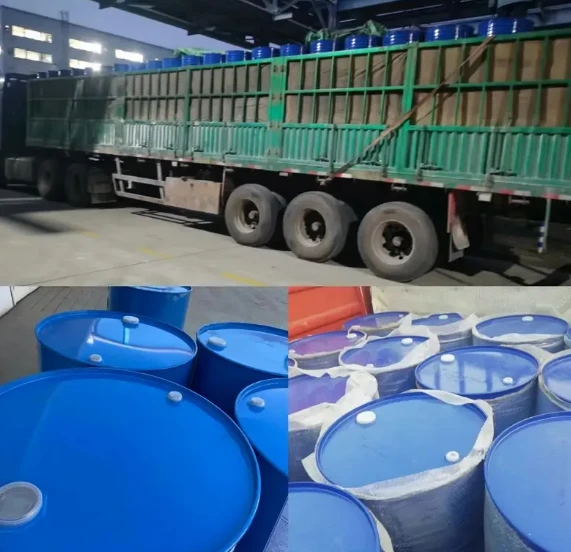The Role of Tetramethylethylenediamine in Catalysis
In the dynamic field of chemical catalysis, ਟੈਟਰਾਮੇਥਾਈਲਥਾਈਲੀਨੇਡੀਆਮਾਈਨ (ਟੀ.ਐਮ.ਈ.ਡੀ.ਏ.), also referred to as tmeda chemical ਜਾਂ tmeda reagent, has emerged as a versatile and indispensable compound. Its unique chemical properties enable it to play crucial roles in a wide variety of catalytic reactions, influencing reaction rates, selectivities, and product yields.
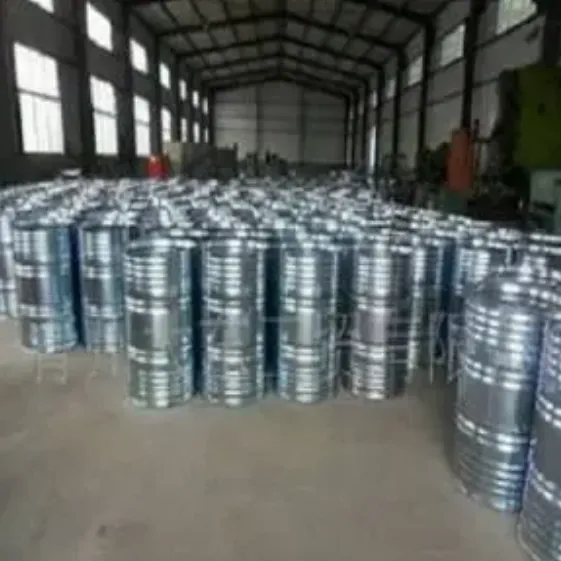
Tetramethylethylenediamine as a Ligand in Catalysis
ਟੈਟਰਾਮੇਥਾਈਥਾਈਲੇਨੇਡੀਆਮਾਈਨ assumes a pivotal role as a ligand in the realm of catalytic reactions. In coordination chemistry, tmeda reagent readily donates its lone pairs of electrons to metal centers, facilitating the formation of stable complexes. These complexes frequently serve as catalysts or catalyst precursors in numerous chemical reactions. For instance, within transition - metal - catalyzed cross - coupling reactions, ਟੈਟਰਾਮੇਥਾਈਲਥਾਈਲੀਨੇਡੀਆਮਾਈਨ can coordinate with metals like nickel or palladium. By stabilizing the metal center, it modifies the electronic and steric environment around the catalyst, thereby enhancing the reaction's reactivity and selectivity. This capacity to fine - tune catalytic activity renders tmeda chemical an essential component in the development of efficient catalytic systems for organic synthesis.
Accelerating Reactions with Tmeda Reagent
Tmeda reagent is well - known for its ability to accelerate catalytic processes. In numerous reactions, it acts as an accelerator by promoting key steps within the catalytic cycle. In specific polymerization reactions, tmeda reagent can coordinate with initiators or catalysts, driving the initiation, propagation, and termination stages forward. It aids in the generation of active species, reducing the activation energy needed for the reaction to proceed. Consequently, reactions that might otherwise progress slowly or inefficiently can be executed more rapidly and with higher yields when tmeda reagent is involved, making it a valuable asset in industrial - scale chemical production.
Enhancing Selectivity Using Tmeda Chemical
Selectivity is a critical factor in catalytic reactions, and tmeda chemical plays a significant role in enhancing it. By coordinating with catalysts, tmeda chemical can guide the reaction pathway towards the desired product. In asymmetric catalysis, where the objective is to produce a single enantiomer of a chiral compound, tmeda chemical can influence the reaction's stereochemistry. It alters the spatial arrangement around the catalyst, steering addition or substitution reactions in a specific manner. This property empowers chemists to control reaction outcomes more precisely, leading to the synthesis of complex molecules with high enantiomeric excesses. The ability of tmeda chemical to enhance reaction selectivity positions it as an important tool in the production of pharmaceuticals, agrochemicals, and other fine chemicals.
Catalyst Stabilization by Tetramethylethylenediamine
Catalyst stability is essential for the long - term efficiency and cost - effectiveness of catalytic processes, and ਟੈਟਰਾਮੇਥਾਈਲਥਾਈਲੀਨੇਡੀਆਮਾਈਨ makes significant contributions in this area. ਟੈਟਰਾਮੇਥਾਈਥਾਈਲੇਨੇਡੀਆਮਾਈਨ can safeguard catalysts from deactivation by preventing unwanted side reactions or interactions. In certain oxidation or reduction reactions, it forms a protective layer around the catalyst, shielding it from reactive species that could cause degradation. Additionally, through coordination with the catalyst, it can prevent the aggregation of catalyst particles, maintaining their active surface area and ensuring consistent catalytic performance across multiple reaction cycles. This stabilizing effect extends the lifespan of catalysts, reducing the frequency of replacement and ultimately cutting production costs.
Environmental and Economic Impacts of Tmeda Reagent in Catalysis
ਦੀ ਵਰਤੋਂ tmeda reagent in catalysis has implications for both the environment and the economy. From an environmental standpoint, the enhanced efficiency and selectivity brought about by tmeda reagent can lead to reduced waste generation, as fewer by - products are formed. This aligns with the principles of green chemistry, promoting more sustainable chemical processes. Economically, the ability of tmeda reagent to boost reaction rates, yields, and catalyst lifetimes translates into increased productivity and cost savings in industrial settings. By enabling the use of lower catalyst loadings or shorter reaction times, tmeda reagent helps optimize resource utilization, making chemical production more economically viable.
The Role of Tetramethylethylenediamine in Catalysis FAQS
What Are the Key Properties of Tetramethylethylenediamine?
ਟੈਟਰਾਮੇਥਾਈਥਾਈਲੇਨੇਡੀਆਮਾਈਨ is a colorless liquid characterized by a strong amine odor. It exhibits high solubility in organic solvents and possesses two nitrogen atoms with lone pairs of electrons, which are responsible for its ligand - forming ability. Its basic nature allows it to interact with acids and metal ions, and it has a relatively low boiling point, a property that influences its handling and application in reactions.
In Which Catalytic Reactions Is Tmeda Chemical Typically Applied?
Tmeda chemical is commonly employed in transition - metal - catalyzed reactions, such as Suzuki - Miyaura, Negishi, and Stille cross - coupling reactions. It is also utilized in polymerization reactions, including both radical and anionic polymerizations, as well as in asymmetric catalysis. Furthermore, tmeda chemical finds application in certain organocatalytic reactions where its basicity or coordination ability with reactants or catalysts can impact the reaction outcome.
How Does Tmeda Reagent Influence Catalytic Process Costs?
Tmeda reagent can have a positive impact on the costs of catalytic processes. By enhancing reaction efficiency, it reduces the amount of raw materials wasted as by - products. Its role in catalyst stabilization extends the lifespan of catalysts, minimizing the need for frequent replacement. The increased reaction rates achieved with tmeda reagent also boost production throughput, resulting in overall cost savings in industrial - scale chemical manufacturing.
Can Tetramethylethylenediamine Be Recycled in Catalytic Reactions?
In some instances, ਟੈਟਰਾਮੇਥਾਈਲਥਾਈਲੀਨੇਡੀਆਮਾਈਨ can be recycled and reused. Following the completion of a reaction, separation techniques like distillation or extraction can be used to recover ਟੈਟਰਾਮੇਥਾਈਲਥਾਈਲੀਨੇਡੀਆਮਾਈਨ. However, its recyclability depends on the nature of the reaction and the ease of separating tmeda reagent from reaction products and other components. In complex reaction mixtures, complete recovery may pose challenges, but ongoing efforts aim to develop more efficient recycling methods.
What Safety Measures Should Be Taken When Handling Tmeda Chemical?
When handling tmeda chemical, it is crucial to wear appropriate personal protective equipment, including gloves, goggles, and a lab coat, as it can cause skin and eye irritation. Work should be conducted in a well - ventilated area to avoid inhaling its vapors, which can be harmful. Store tmeda chemical in a cool, dry place, away from oxidizing agents and acids, as it can react violently with these substances. In case of accidental contact, immediately rinse the affected area with plenty of water and seek medical attention if necessary.
Are you in search of high - quality ਟੈਟਰਾਮੇਥਾਈਲਥਾਈਲੀਨੇਡੀਆਮਾਈਨ, tmeda chemical, ਜਾਂ tmeda reagent for your catalytic reactions? Our company offers a comprehensive range of top - notch products, ensuring purity and reliability. With our TMEDA products, you can enhance the efficiency, selectivity, and cost - effectiveness of your catalytic processes. Contact us today to explore our product range and place your order!
Post time: ਜੂਨ . 10, 2025 15:53












